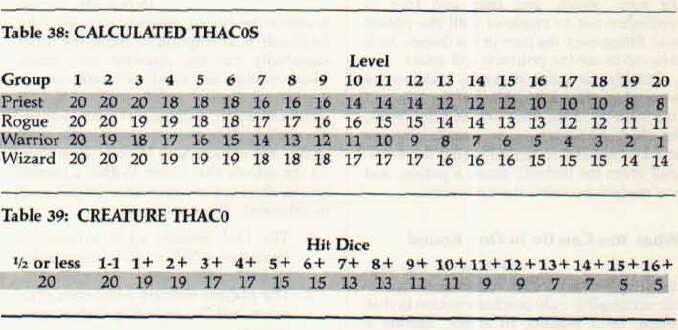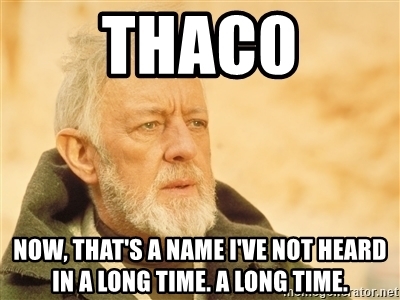
Over the weekend I happened to grab a bundle deal on the Enhanced Editions of the old BioWare Infinity Engine titles that Beamdog put out several years back. For those of you who may not be aware – these are of course the classic computer RPGs of Baldur’s Gate, Baldur’s Gate 2, Icewind Dale, and Planescape: Torment. This, of course, means engaging and immersing myself back in the ofttimes byzantine “classic” rules of Advanced Dungeons and Dragons. And let me tell you, it’s a stark look at just how far we’ve come in the years since that game was what dominated the tabletop industry.
Now don’t get me wrong – AD&D is what I cut my teeth on after getting into the hobby through West End Games’s Star Wars Roleplaying Game. But even then, I didn’t engage fully with the rules as my friends and I navigated our way through our campaigns with numerous house rules to make running it easier and more enjoyable for us. That said – I do think there were some unique and interesting ideas buried in there. I want to take some time and look at some of these classic rules in some articles, highlighting both the good and the not so good (and maybe doing some deep dives into the rules will spur me to start my Tuesday night AD&D game – we’ll of course call game night THAC0 Tuesdays).
Fittingly, I want to start with potentially the most talked about “feature” from AD&D and one that I’ve yet to see concisely explained in any capacity by anyone who played the game – THAC0.

THAC0, pronounced “thack-oh,” no I will not be taking any questions on my pronunciation, is an acronym that stands for “to hit Armor Class zero.” Back in the misty days of the past, a high AC wasn’t a good thing. As a character got better armor, their AC actually decreased, and often went into the negatives with 0 serving as a kind of benchmark for the game. THAC0 then, was the unadjusted number that you had to roll on a d20 in order to hit a creature that had an Armor Class of 0 and itself is a codified version of the “attack matrices” that each class had in previous editions of the game where you were cross referencing all of your attack rolls against a chart to see if you scored a hit on a monster with a certain AC value.
And true to many things from this time frame, there are multiple stories as to how it came to be – one story is that THAC0 was what was beginning to be used for tournament play in order to standardize the game and make it fair for everyone and that bled into other releases. The other story that I was able to find is that THAC0 was an internal tool that the developers used to help calculate battle statistics that eventually leaked out into published material. But whatever the origin, it started to see widespread use in the 2nd edition of the game’s rules released in 1989.
That’s a fun little history lesson – but how to you use the damn thing?
THAC0 is basically a character’s “attack bonus” as it appears in today’s games just reverse engineered and used the target’s actual AC as a final modifier instead of just the target number you needed to hit. Every character starts off at level 1 with a THAC0 of 20. That means to hit an enemy with an Armor Class of o, they would need to roll a 20 on a d20 to score a hit and cause damage. As a character gains experience and advances in level, their THAC0 decreases, showing their increased proficiency in battle. Warrior classes like the Fighter and Paladin reduced their THAC0 by 1 every level. So at level 2, the score would be a 19, and at 5th level it would be a 16, and so on and so forth. Other classes that didn’t put as much emphasis on combat might only reduce their THAC0 every other or even every third level. These classes tended to have other abilities at their disposal though, such as spellcasting or thief abilities to help bridge the gulf. NPCs and creatures on the other hand had a THAC0 score that was tied to their overall Hit Dice – simply put, the tougher a monster was, the better its THAC0 score.

Other things could further modify your THAC0. If, for example, you were a Fighter class that was specialized in your weapon or you were wielding a magical weapon it would provide a further bonus to your THAC0 dropping it even further. Alternatively, penalties could be levied against it based on using a weapon that you weren’t familiar with or the environmental effects or various spells that would increase your THAC0. Once all the bonuses and penalties were factored it, it was time for the DM to apply the final modifier to the score, which was based on the target’s Armor Class.
Remember – THAC0 means what you need to roll to hit a creature with an Armor Class of 0. AC values ranged from 10 (no armor) to -10 and even lower in some cases. Every point above 0 was effectively a bonus to your THAC0 whereas every point below 0 was effectively another penalty. Let’s say you’re playing a 5th level Fighter and so your THAC0 score out of the gate is a 16. You are wielding a longsword which you are specialized in, giving you an additional bonus to hit. Furthermore, your weapon is actually a magical +1 longsword. So your final THAC0 with that weapon is a 14. The monsters you are fighting have an AC of 5. Since that’s above 0, you subtract another 5 from your THAC0 and find out you score a hit on a 9 or above. Then you end up facing the boss monster of the dungeon and it has an AC of -2. Since this is below 0, you add 2 to your THAC0 meaning that you only score a hit on this creature on a 16 or above – hope you have some allies that can provide some buffs to your attack rolls.
When you break down the process and the math, you can see the beginnings of what would become the “attack bonus total against an enemies AC” that ultimately (and thankfully) replaced THAC0 in the 3rd Edition of Dungeons and Dragons and beyond. Was it more cumbersome than it needed to be? I’ll grant you that, but it’s hardly the stupidest rule from that era as many people seem to think. There are a lot of warts on previous editions of D&D that are a lot uglier and harder to rationalize than THAC0, but because it was so front and center, it often draws a lot of the heaviest fire and criticism. And that’s not fully unwarranted with the math on “bonuses” and “penalties” being flipped, but I hope I’ve helped you to understand exactly what it is, where it came from, and most importantly, why it existed back in the day. And I hope you enjoyed this little dive into the past of one of the titans of our hobby – expect some more pieces in the coming weeks and months. And who knows… maybe THAC0 Tuesdays will finally get off the ground.
